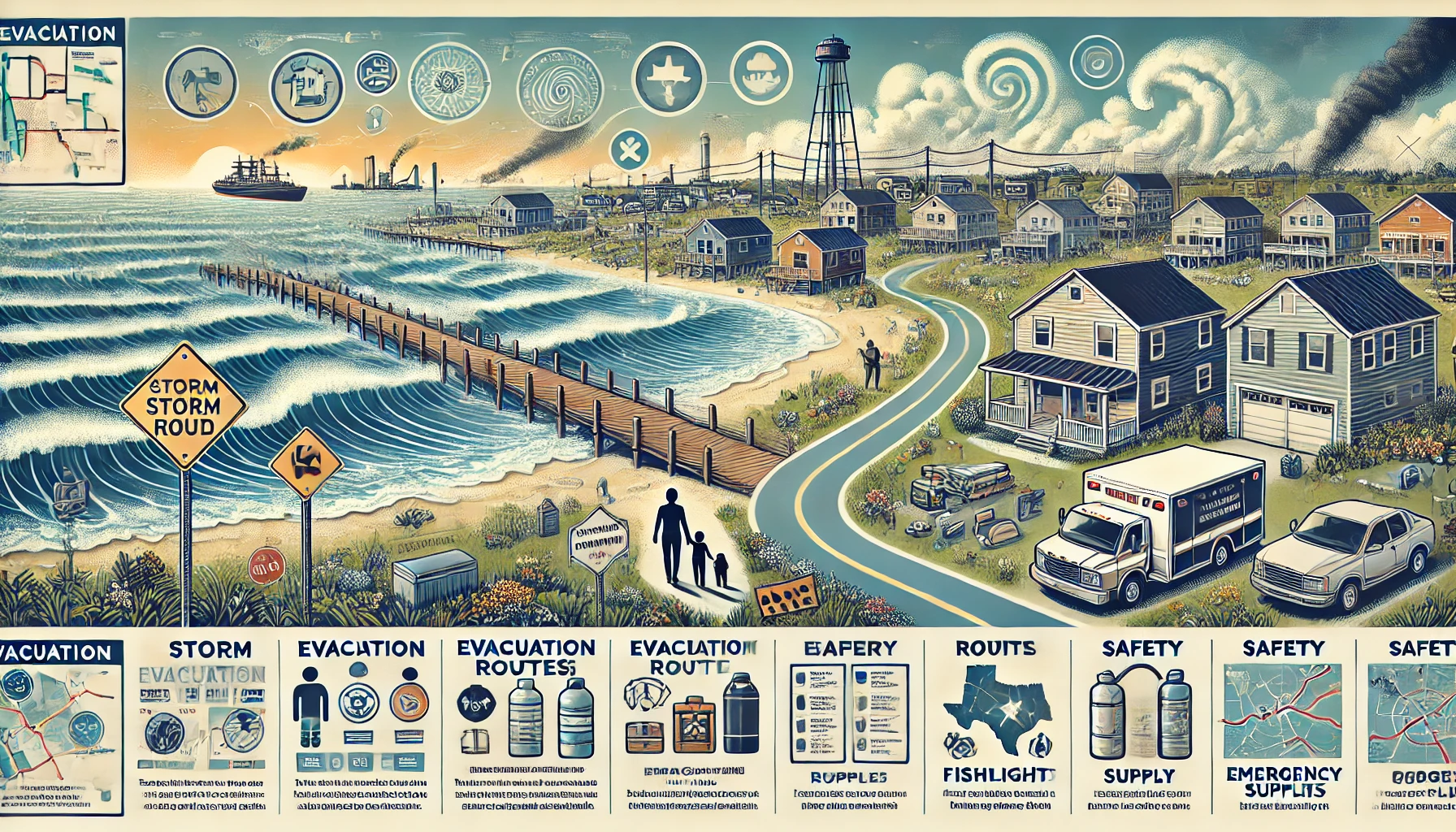
Comprehensive Port Aransas Evacuation Guide: Steps, FAQs, and Preparation Tips
Port Aransas Evacuation Guide: Steps for Safety
As a coastal city, Port Aransas is occasionally affected by tropical storms and hurricanes. When these natural events approach, the city government may issue evacuation orders to ensure the safety of residents and visitors. Here’s a step-by-step guide to understanding evacuation orders, preparing for an evacuation, and knowing where to find real-time updates.
1. Understanding Evacuation Orders
There are different types of evacuation orders, each issued based on the severity of the storm. Here’s a quick breakdown:
- Voluntary Evacuation: Recommended for vulnerable populations, such as those in low-lying areas, the elderly, or those with medical conditions. It’s not required but advised for safety.
- Mandatory Evacuation: Issued when there is a significant threat. All individuals, including residents and visitors, must evacuate.
Each type will be communicated through official channels.
2. Where to Find Real-Time Updates
Official Websites:
- Port Aransas Official Website provides alerts, news updates, and emergency guidelines.
- National Weather Service (NWS): Offers real-time weather alerts and storm tracking.
- Local News Outlets: Websites like Port Aransas South Jetty often have localized updates.
Social Media:
- City of Port Aransas: Follow on Twitter, Facebook, and Instagram for immediate updates.
- Emergency Alert Systems: Text alerts and apps, like Ready.gov, often provide notifications during storms.
Evacuation Maps and Routes:
- Maps are available through Port Aransas and the Texas Department of Transportation. Familiarize yourself with your local evacuation route in advance.
3. Preparing for an Evacuation
A. Assemble an Emergency Kit
Your kit should include:
- Water and non-perishable food for at least three days
- Battery-powered radio for updates
- Flashlight, batteries, and phone chargers
- Medications, important documents, and personal items
- Cash, as ATMs may not work during power outages
B. Secure Your Home
- Windows and Doors: Close and secure them. Boarding windows may be advisable for hurricanes.
- Unplug Appliances: Turn off all non-essential electrical devices to reduce the risk of power surges.
- Elevate Important Items: If you live in a flood-prone area, move valuables to higher floors.
4. Following the Evacuation Order
When an evacuation order is issued, do the following:
- Leave Early: Roads can become congested, especially if many are evacuating simultaneously.
- Plan Your Route: Know where you’re going, whether it’s a friend’s home, a hotel, or an emergency shelter.
- Stay Calm: Follow the instructions from local authorities and keep up-to-date via emergency alerts.
5. Returning Home After an Evacuation
After the evacuation order is lifted:
- Check for Updates: Only return home when local authorities indicate it’s safe to do so.
- Inspect Your Property: Look for damage to electrical systems, water pipes, and gas lines.
- Be Prepared for Limited Services: Power and water may take time to be fully restored.
6. Additional Tips for Visitors
If you’re a visitor in Port Aransas during hurricane season:
- Stay Informed: Check weather forecasts regularly and be aware of any potential storms.
- Follow Hotel or Rental Instructions: Your host will have emergency plans and instructions for guests.
- Evacuate on Time: As a visitor, it’s important to respect evacuation timelines to help emergency responders assist residents.
Final Reminders
Evacuating can be stressful, but preparation and timely action can make a big difference. Always prioritize safety, stay informed, and have a clear plan for evacuation and return.
This guide is intended to help ensure that anyone in Port Aransas is prepared and can navigate an evacuation safely and efficiently.
1. How will I know if an evacuation order has been issued in Port Aransas?
Answer: Evacuation orders are communicated through various channels, including the City of Port Aransas website, local news outlets like Port Aransas South Jetty, and emergency alerts from the National Weather Service. You can also follow the City of Port Aransas on social media for real-time updates.
2. What should I do if I don’t have a car and need to evacuate?
Answer: If you don’t have a vehicle, contact local authorities for information about available transportation options. During mandatory evacuations, the city often arranges buses or other transportation services for those in need. Make arrangements early to ensure you have a secure ride.
3. Where can I find evacuation routes for Port Aransas?
Answer: Evacuation routes are provided on the Texas Department of Transportation website, and you can find maps on the City of Port Aransas website or at the city’s emergency management office. It’s a good idea to familiarize yourself with these routes ahead of time, especially if you’re in a flood-prone area.
4. Can I come back to Port Aransas as soon as the storm has passed?
Answer: No, only return when the city has lifted the evacuation order and confirmed it’s safe. Local authorities will assess the area for hazards like downed power lines, flooding, and debris before allowing residents and visitors back. Listen to official updates for when you can safely return.
5. What should I pack in my evacuation kit if I have young children or pets?
Answer: For young children, pack essentials like diapers, formula, baby food, and extra clothing. For pets, bring food, water, leashes, carriers, and any necessary medications. Make sure your kit also includes copies of important documents, like immunization records for both kids and pets. Tailoring your kit to meet specific needs will make the evacuation process smoother.






